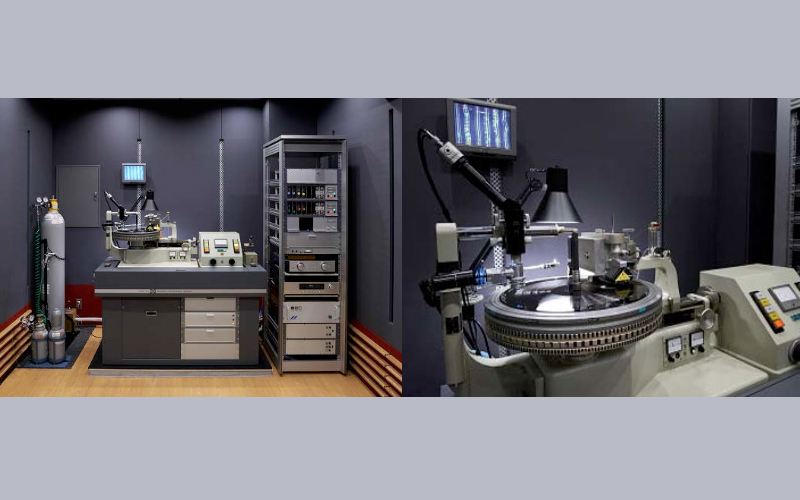The making of a vinyl revival. Pic: Wei-Cheng Wu on Unsplash
How to make a vinyl record
First, a master recording is made, usually in a studio where engineers perfect the recorded sound. Analogue mixes are recorded onto tape; digital mixes onto digital tape formats or, more commonly today, the hard drives of digital audio workstations.

Alan Moulder’s music recording studio. Pic: Mike Banks for recordproduction.com
Then an object called a lacquer is placed on a record-cutting machine, and as it rotates, electric signals from the master recording travel to a cutting head, which holds a stylus, or needle. The needle etches a groove in the lacquer that spirals to the centre of the circular disc.

Neumann disc cutting lathe. Pic: The Vinyl Factory
The imprinted lacquer is then sent to a production company. Acetates, which are cut directly by the lathe, are used for preview listening. The acetate material isn’t robust and wears out after a few plays.
At the pressing plant, the lacquer is coated in a metal, such as silver or nickel, to produce a metal master. When the metal master is separated from the lacquer, the resulting disc has ridges instead of grooves. The metal master is then used to create a metal record, called the mother, which is used to form the stamper. Stampers are just negative versions of the original recording used to make the actual vinyl records.

The Vinyl Factory, Hayes. Pic: Michael Wilkin, courtesy of The Vinyl Factory
Next, the stamper is placed in a hydraulic press, and vinyl is sandwiched in- between. Steam from the press softens the plastic, as the stampers push an impression of the master recording onto it. Finally, the disc is cooled and stiffened with water.
